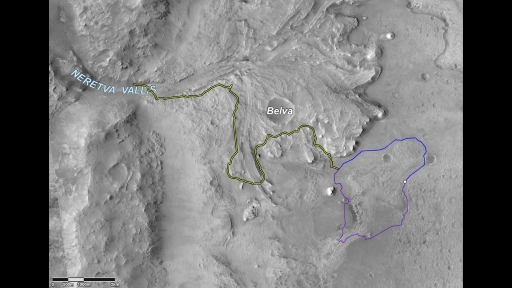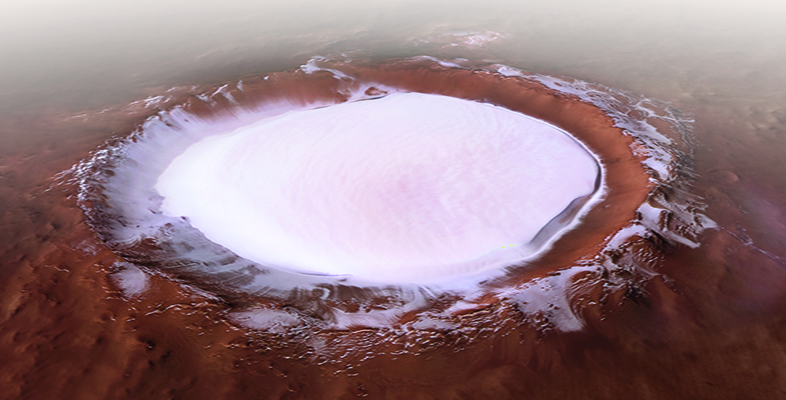New rovers arrive!
The tantalising glimpse into Mars’ watery past that has been provided by Curiosity is just the start of what researchers hope will be a fuller reconstruction of the history of water on Mars. While Curiosity continues to traverse the martian surface, new rover missions to Mars are already underway.
NASA’s Perseverance rover landed in Jezero crater February 2021. This landing site was selected by the mission team because HiRISE images indicated it may once have had a deltaic environment (Figure 53). The rover carries an array of instruments that can investigate the chemistry and mineralogy of the martian surface to construct the geological history of Jezero crater.

Perseverance also carries an instrument, called MOXIE, that can produce oxygen from the carbon dioxide of the martian atmosphere. This will test the technologies needed to create life support system and generate rocket fuel, in preparation for sending astronauts to Mars.
Importantly for our story of water on Mars, Perseverance will fill several tubes with rock samples as it traverses the Jezero crater area, and deposit these so that a future sample fetch rover will collect them and bring them back to Earth. The samples it collects will be carefully chosen to represent those that are most likely to have harboured life, if it ever had been there.
-
Based on what you have learned so far, what types of rock samples do you think Perseverance might select for future sample return?
-
Perseverance is likely to select rocks that had been in contact with water, including rocks that contain clay minerals and/or sulfates. It may target sedimentary rocks that have been deposited in water-rich environments.
The samples, once returned to Earth, will be analysed using more sophisticated instrumentation than can be sent to Mars and provide us with an unprecedented level of detail about the martian surface, the presence of water and the possibility of life.
A second rover landed on Mars in 2021: the Chinese National Space Administration’s Zhurong rover. China’s first mission to the red planet was delivered by their Tianewen-1 orbiter, and is intending to study the martian topography, subsurface and atmosphere, and look for signs of life and possible resources for future human missions.
